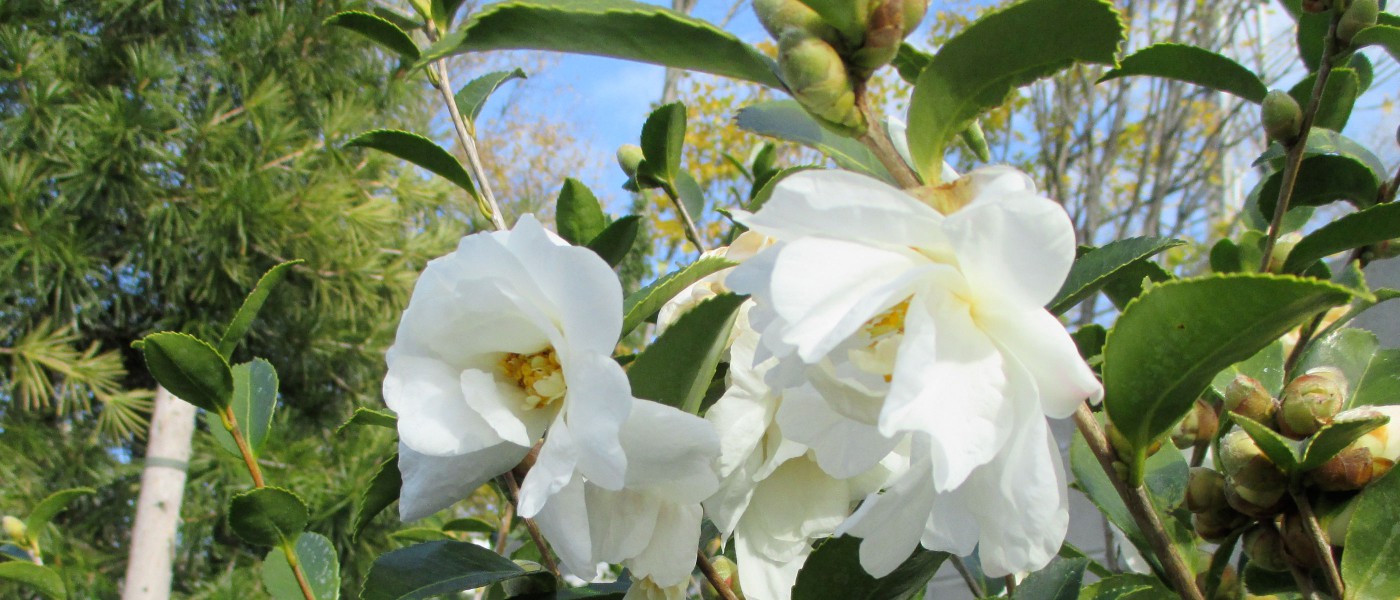Why Are Flowers Blooming Now?
Clumps of white Christmas roses, masses of green-hued stinking hellebores, and white, pink, and red camellias have been popping out near Brooklyn Botanic Garden's newly renovated Flatbush Avenue entrance. A grouping of cherry laurel shrubs by the Children’s Garden is also making a little show of delicate white blossoms, and the spidery golden blossoms of our native witch-hazel are peeking out from behind the fence on Flatbush Avenue. Has the warm weather fooled these plants?
The appearance of these blooms in late November or early December isn’t as unusual as it may seem, says Jenny Blackwell, who tends this section of the Garden. Stinking hellebore (Helleborus foetidus), so called for the pungent smell of its crushed leaves, and many of the fall- and winter-blooming camellias often start their show this time of year and persist into February.
Several cultivars of Camellia sasanqua, including ‘Long Island Pink’, ‘Winter’s Snowman’, and ‘Northern Exposure’, are blooming in various shades of pink and white. “This area was designed as an early-spring-blooming garden, but many of the plants here flower in other seasons as well,” says Blackwell.
Why would a plant bloom in these colder months? “We know that one of our winter bloomers, native witch-hazel (Hamamelis virginiana), is pollinated by organisms that are active in winter months, like some species of owlet moths,” says Blackwell. Still, the lovely white and pale green flowers of Helleborus niger ‘HGC Josef Lemper’, which have been blooming for several weeks, usually don’t begin opening until later in December.
Stress caused by the dry summer and fall, along with the persisting mild temperatures, may have triggered early blooming on the new transplants. Other plants, including camellias like Camellia japonica ‘Korean Fire’ and the cherry laurel (Prunus laurocerasus ‘Otto Luyken’), which normally blossom in spring, are most likely also reacting to these stresses. There are even a few daffodils putting out leaves here and there in the new garden.
Is there reason to worry about these plants as winter’s cold and snow inevitably sets in? “Most of the plants blooming now won’t blossom again in spring, but the daffodils will go dormant again as soon as real cold weather comes, and in March or April they’ll bud and bloom, along with later-blooming hellebores and bulbs like tulips and Siberian squill,” says Blackwell.


